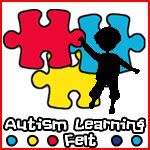From my Factoidz page Special education teachers are charged with teaching a diverse group of learners. Some students come to the classroom with visual and or hearing impairments that impact not only the child’s developmental level, but his or her academic achievement. The educator must have a working knowledge of the types, degrees and causes of these impairments. Additionally, the teacher should be familiar with the legal definition and the definition as it relates to educational outcomes so that he or she can correctly select, plan and implement the Individualized Education Plan (IEP).
Hearing Impairments
Humans are equipped to hear sounds by way of the intricate workings of the ear and the ability of the ears functional relationship with the brain. Heward (2010) describes the hearing process as the outer ear absorbs sound waves that travel through the tympanic membrane, more commonly known as the eardrum, transferring the energy of sound to the middle ear and entering the most complex part of the brain the cochlea. The cochlea is the main receptor organ for hearing and works with the semicircular canals which control our sense of balance (2010). The auditory nerve carries the sound as it has been transferred through this intricate system to the brain, where the information is process for response.
Saturday, June 12, 2010
Subscribe to:
Post Comments (Atom)
 RSS Feed
RSS Feed Twitter
Twitter















0 comments:
Post a Comment